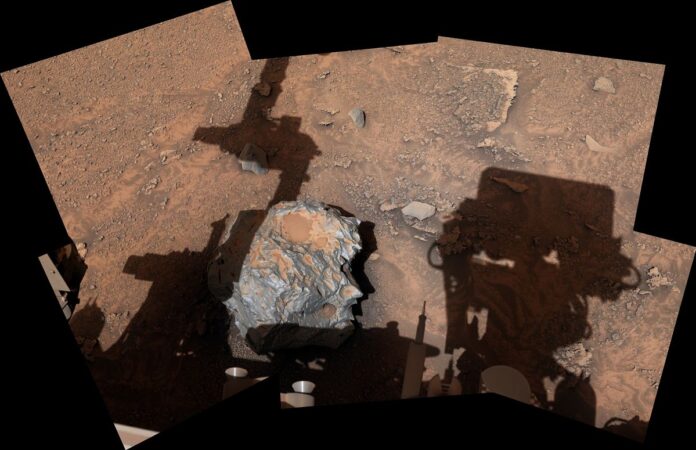NASA’s Curiosity rover has found another meteorite on Mars.
The space rock is about 1 foot (0.3 meters) wide and consists primarily of iron and nickel, Curiosity team members announced via Twitter on Thursday (Feb. 2). And the meteorite has a name.
“We’re calling it ‘Cacao,'” the Curiosity team wrote in the Twitter post (opens in new tab), which includes a photo of the rock.
Related: 15 stunning Mars photos by NASA’s Curiosity rover
The car-sized Curiosity landed inside Mars’ 96-mile-wide (154 kilometers) Gale Crater in August 2012, on a quest to determine if the area could have supported Earth-like life long ago.
The robot’s work over the past decade has answered that question in the affirmative, showing that Gale hosted a potentially habitable lake-and-stream system in the ancient past. What’s more, this watershed likely persisted for millions of years at a stretch, possibly allowing time for the rise of Martian microbes.
Curiosity is not a life-hunting mission, so it’s not looking for signs of these microbes, if they ever existed. But Curiosity’s cousin Perseverance, which landed inside a different Mars crater in February 2021, is conducting a life search, and also collecting dozens of samples for future return to Earth.
Since September 2014, Curiosity has been climbing the flanks of Mount Sharp, a huge massif that rises about 3.4 miles (5.5 kilometers) into the sky from Gale’s center.
The rover recently notched a big milestone on this trek, reaching sulfate-rich deposits that formed in relatively dry conditions. Curiosity’s observations of these rocks could help scientists better understand when and how Gale Crater, and the Red Planet at large, transitioned from a relatively warm and wet place to the frigid desert it is today, mission team members have said.
Curiosity has driven 18.31 miles (29.47 km) on Mars to date, according to its mission page (opens in new tab). The rover has stumbled across several other meteorites during this epic off-planet journey, as the rover team noted in several other photo-featuring tweets on Thursday.
“Here’s another meteorite I found in 2016. It’s called ‘Egg Rock,’ aka the golf ball,” one Thursday Twitter post reads (opens in new tab).
“And while my team calls this 7-foot-long meteorite ‘Lebanon,’ I call it THE BEAST,” another Thursday tweet states (opens in new tab).
Curiosity discovered Lebanon, or The Beast, in May 2014, though NASA didn’t publicize photos of the big rock until July of that year. The Beast and two nearby stones were the first meteorites that Curiosity found on the Red Planet.
Mike Wall is the author of “Out There (opens in new tab)” (Grand Central Publishing, 2018; illustrated by Karl Tate), a book about the search for alien life. Follow him on Twitter @michaeldwall (opens in new tab). Follow us on Twitter @Spacedotcom (opens in new tab) or on Facebook (opens in new tab).

